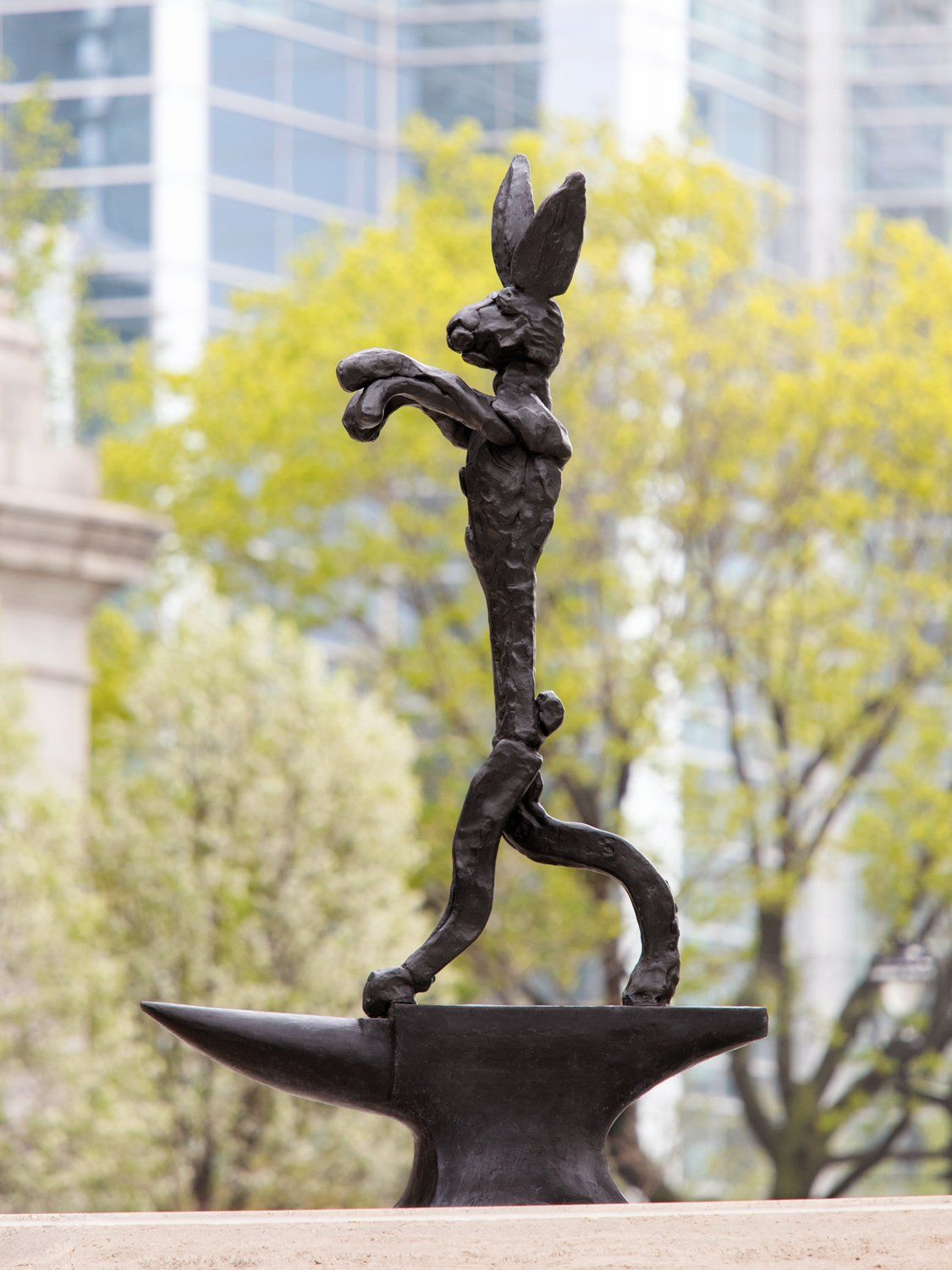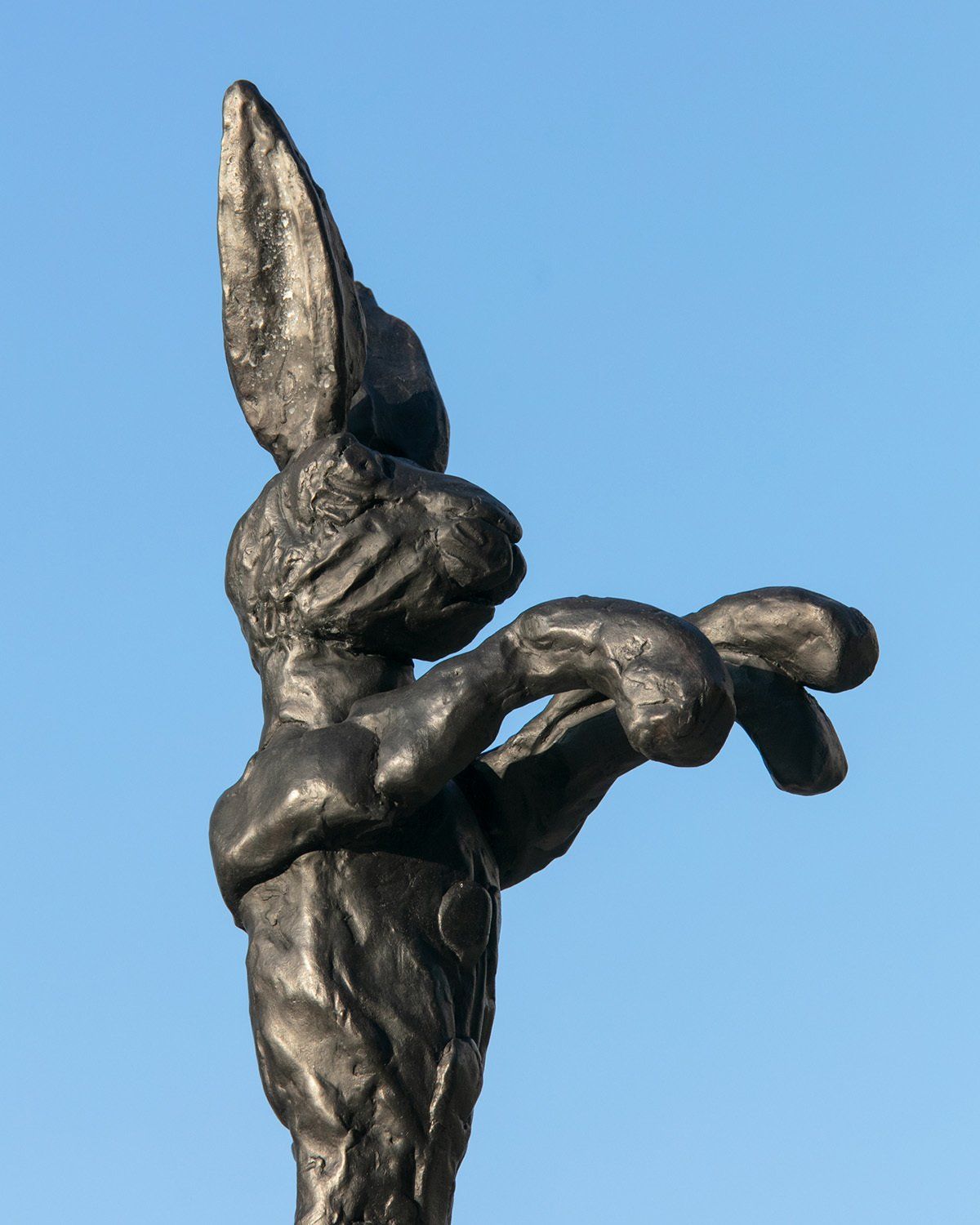2019 Exhibition
Barry Flanagan | Large Boxing Hare on Anvil | 1984
Barry Flanagan | Large Boxing Hare on Anvil | 1984
bronze | 86 1/2 x 48 3/4 x 18 1/2 inches
Courtesy the Estate of Barry Flanagan/Plubronze Ltd./ Wadding Custot and Paul Kasmin Gallery, New York
As part of a 1960s generation reacting to the muscular, weld-forward geometric abstraction of Sir Anthony Caro, Flanagan and his fellow students at St. Martin’s School of Art followed tutor John Latham in creating works that explored a post-war world. Flanagan’s work of the 60s and 70s have been seen as Process Art, Arte Povera or Anti-Form, for the artist’s use of immaterial material, full of visual and verbal puns, with witty allusions to the relativity of the material world. Flanagan’s installations included light, natural and projected; sand; sticks; bags of rubble; and other non-precious, non-art materials.
So it was with a great deal of surprise when Flanagan, in 1978-79, created his first drawing of a hare, inspired by a live one but triggered by a dead one, an image that appeared in his very tangible sculpture for the next three decades.
Cultures from around the globe have ascribed conflicting attributes to the hare in their myths, literature and art: soulful and mischievous, pure and profligate. German artist Josef Beuys used a hare as a personal stand-in based on his near-death experience as a German pilot during World War II. British writer Lewis Carroll used the hare as Alice’s guide in Wonderland. The Warner Brothers invented a cartoon bunny with an attitude, ushering in a sense of the absurd as America entered into a war that made them grow up. Flanagan’s hare is a proxy for humans—but also for the unseen forces of the natural world.
In Large Boxing Hare on Anvil, just five years into Flanagan’s focus on the hare, we see an awkwardly upright rabbit walking as if in a trance, its’ arms thrust outward towards a lost battle. The heavily worked metal of the figure, which reveals the hand of the artist, is contrasted against the solidity of the anvil. The hare too represents the fact and idea of a line in space, the animals’ slender profile slipping in and out of focus as we circle the piece.
Animate, inanimate, human-made, natural, there are overt and subtle contrasts in this work that embody Flanagan’s lifelong adventure in representing the world.
Audio Tour
US Bank Building (Northwest Corner)






